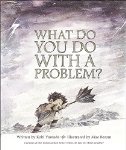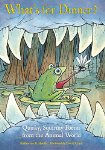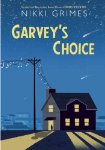Learning how to deal with problems is a vital skill to have. The funny thing is that many of us have no clue what to do when things go wrong. We wring our hands, have a panic attack, moan and groan, or burst into tears. We try to run away from our problems, or pretend that they are not there. Needless to say, none of these strategies improve our situation in the slightest.
Today's picture book will help readers of all ages to better understand how to deal with a problem. The narrative is beautifully presented without being preachy or pedantic. The story is supportive and it helps readers to think about their problems in a new way.
 What do you do with a Problem?
What do you do with a Problem?
Today's picture book will help readers of all ages to better understand how to deal with a problem. The narrative is beautifully presented without being preachy or pedantic. The story is supportive and it helps readers to think about their problems in a new way.
 What do you do with a Problem?
What do you do with a Problem?
Kobi Yamada
Illustrated by Mae Besom
Picture Book
For ages 5 and up
Compendium Inc, 2016, 978-1-943200-00-9
One day a little boy finds out that he is saddled with a
problem, a problem that he does not like, did not ask for, and does not want.
He has no idea what he is supposed to do with the problem or what it wants, and
not surprisingly he would like it to go away. He tries shooing it, scowling at
it, and even ignoring it but nothing works.
The thing about
problems is that they can cause a lot of new problems. People worry about them,
and get anxious that their problem will do something to them or change their
life in some dreadful way. The worry builds on itself and unfortunately this
only makes the problem bigger.
No matter what
the little boy does his problem can always find him, and the more he tries to
avoid it “the more I saw it everywhere.” The problem is taking over his life!
No matter how
old you are problems can get the better of you. They worry at you and make you
so miserable that you start to feel as if your life is just one big,
uncontrollable problem. Thankfully the author and the illustrator of this
remarkable book understand exactly what this feels like, and they offer readers
support that is simple and yet profound. It turns out that problems contain
something special and surprising.





